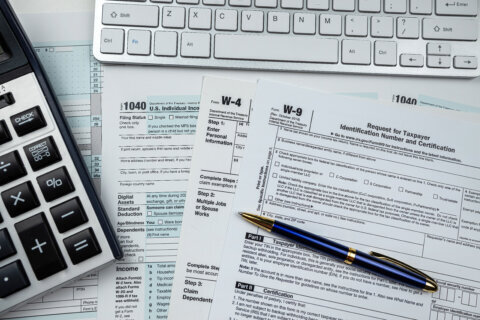Low-income Americans who aren’t usually required to file taxes could be leaving a lot of money on the table if they don’t file a 2020 return thanks to changes made by the latest pandemic relief package.
Many may still be waiting on a stimulus payment because the Internal Revenue Service didn’t have their information on file. Plus, the expanded child tax credit means that families could be sent more money this summer — but only if they file a return.
Accessing those benefits is the reason the IRS wants everyone to file this year, even though people with income under a certain threshold aren’t required to do so because they won’t owe any tax.
This year, tax returns are due Monday, May 17 — a month later than usual due to the pandemic. But if a tax filer doesn’t owe any money, there is generally no penalty for a late filing within three years of the due date. There’s still time to file a 2019 return and possibly receive additional tax credits from that year, too.
Claim a missing stimulus check, or extra cash
The federal stimulus money sent to millions of Americans over the past year is tax-free, but filing a 2020 return could help the estimated 8 million people who may have been eligible for a payment but missed out because the IRS had no way of reaching them.
An online portal that allowed them to input their bank account information is no longer available — but they can file a 2020 return and claim the refundable Recovery Rebate Credit to receive the money. More than 2 million people have already gotten a new stimulus payment by filing a 2020 return, according to the IRS.
Even those who did receive a stimulus payment could be eligible for more money once they file their 2020 return. Because stimulus checks were calculated using 2018 or 2019 income, those who lost their job in 2020 or otherwise saw their income fall from the year before may be able to claim some extra cash on their return and receive what the IRS is calling a “plus-up payment.”
Families could be eligible for more cash this summer
There are some people who might not be required to file a tax return but are eligible for a refund if they qualify for the child tax credit.
The latest pandemic aid package increased the size of the child tax credit and called for it to be sent out in periodic payments that will begin to go out this summer.
Those payments will technically be an advance on a 2021 tax credit. Eligible parents will receive $3,600 for each child under 6 and $3,000 for each child under age 18. Until now, the credit was up to only $2,000 per child under age 17. At least half of the amount will go out over the summer and the remainder will be lumped in with next year’s tax refund.
The enhanced portion of the credit will be available for single parents with annual incomes up to $75,000 and joint filers making up to $150,000 a year.
Congress also made the child tax credit fully refundable so more low-income families can benefit. Previously, if the credit exceeded the taxes owed, parents could only receive up to $1,400 as a refund. These households also must have earned income of at least $2,500. The change could make 20 million more children eligible.
Other benefits won’t go out until next year
Certain tax benefits provided by the latest relief package can’t be claimed until next year. Filing a 2021 tax return will be key to receiving the money.
More workers without children will qualify for the earned income tax credit for 2021, and the maximum amount they can receive will nearly triple. It will be the largest expansion to earned income tax credit in more than a decade — but they’ll have to wait until next year to claim it.
The relief package also beefed up the child and dependent care tax credit to cover half of care costs up to $4,000 for one child or dependent and $8,000 for two or more children or dependents. But again, those credits will have to be claimed on the 2021 return.







